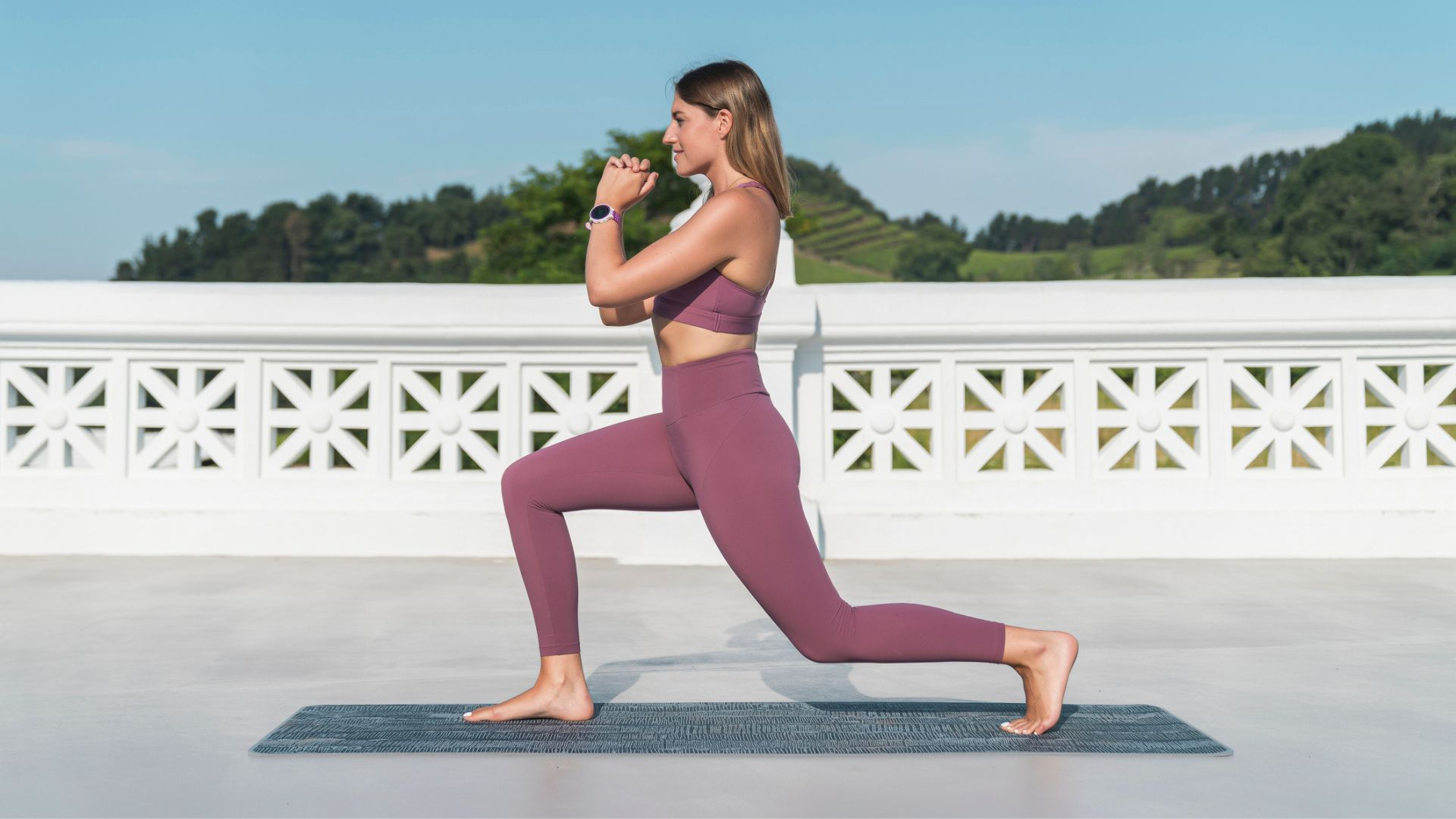
Pilates is a great way to build a stronger, more mobile body. It’s also a top option if you’re exercising at home, with virtually no equipment needed for a mat-based session.
Take this 20-minute routine from Pilates instructor and Shape Pilates founder Gemma Folkard, for example. It promises to strengthen your entire body, mobilize your hips and more with just five bodyweight moves.
All you need to do is unroll your yoga mat and get started.
How to do Gemma Folkard’s full-body Pilates routine
- Triceps dip with leg raise x6-8
- Oblique crunch with hip-opener and leg rainbow x6-8
- Spine stretch with leg extension x6-8
- Lunge with arm raise x6-8
- Lunge hold with arm raise x12
Perform the moves above as a sequence. Each one is designed to flow into the next, so try to transition smoothly between them without breaks. Look below for instructions and video demonstrations to help you execute each one correctly.
Complete the entire sequence on one side of your body, take a few deep breaths, then repeat it on the other side. This should take about 20 minutes, according to Folkard.
She also recommends warming up with a few cat/cow stretches before diving in.
1. Triceps dip with leg raise
- Start on all fours, with your knees directly beneath your hips and your hands slightly in front of your shoulders.
- Extend your left leg behind you so it’s parallel with the ground.
- Keeping your elbows in line with your hands and your back flat, lower them to the ground. As you do this, allow your left leg to lift up so it continues to form a straight line with your torso.
- Push through your hands to straighten your arms again.
- For an easier alternative, perform this move with both knees remaining on the ground.
Instructor’s insight
Folkard says this move offers an enjoyable stretch for your back and abdominal muscles, while also improving your balance and developing upper body stability.
2. Oblique crunch with hip opener and leg rainbow
- Keep your left leg lifted in the above position. Place your right forearm onto the floor so your elbow is under your shoulder. Press the mat away to stay lengthened.
- Open your hip outward by rotating it to the left so your left knee is higher than your hip, then extend your left leg.
- Draw your left knee toward your left shoulder. You should feel this down the left side of your abdomen.
- Extend the leg away and take it behind the other foot in an arc (hence the rainbow name).
- Reverse this motion to return to the start position, then repeat.
Instructor’s insight
Folkard describes this as a “combination move”, bringing a few different movements together in one flowing sequence to deliver several benefits.
“[It’s designed to] mobilize the hip joint, fire up the waistline and strengthen the hips and glutes, specifically the gluteus medius or side glute which is important for stability,” she explains.
3. Spine stretch with leg extension
- Keep your left leg lifted.
- Draw your left knee toward your nose and, as you do this, arch your spine. Your focus here is controlling the stretch by using the abdominals.
- Extend the leg behind as the spine lengthens to neutral. Avoid dipping the lower back by staying parallel with the leg and drawing the lower ribs up slightly.
Instructor’s insight
You might see similarities between this move and the cat/cow stretch, with both offering an enjoyable stretch along your back and abdominals.
This pose offers fewer points of contact with the ground, which challenges your balance and forces you to work on your upper body stability.
4. Lunge with arm raise
- Bring your left foot under your body and between your hands, then stand up in this split stance.
- Inhale, lower your right knee until it’s just above the ground and draw your elbows toward the side of your ribs. You should now be in a lunge, which is your starting position.
- Exhale and extend your right leg to push your torso diagonally forward. As you do this, extend your arms overhead in line with your ears.
Instructor’s insight
This is a full-body move, with muscles in your legs, shoulders, arms and more recruited simultaneously. As a result, it will raise your heart rate while building strength and mobility in your lower body.
5. Lunge hold with arm raise
- Stay in the lunge position, with your weight in your front leg and your left knee over the ankle.
- With energy, reach both arms overhead in line with the ears. They should be at a roughly 45° angle with the floor.
- Lower one arm so it’s in line with your torso, then bring it back overhead and, as, you do, lower the opposite arm to your torso.
- Connect to the move and the muscles to create resistance, advises Folkard. You can also hold light weights to level up each move.
Instructor’s insight
Your arms might be the body part moving here, but it’s your lower body that is more likely to feel the effects of this exercise. That’s because smaller stabilizing muscles around your knee, hip and ankle joints will be challenged to maintain the lunge position while you move your upper body, Folkard says.







